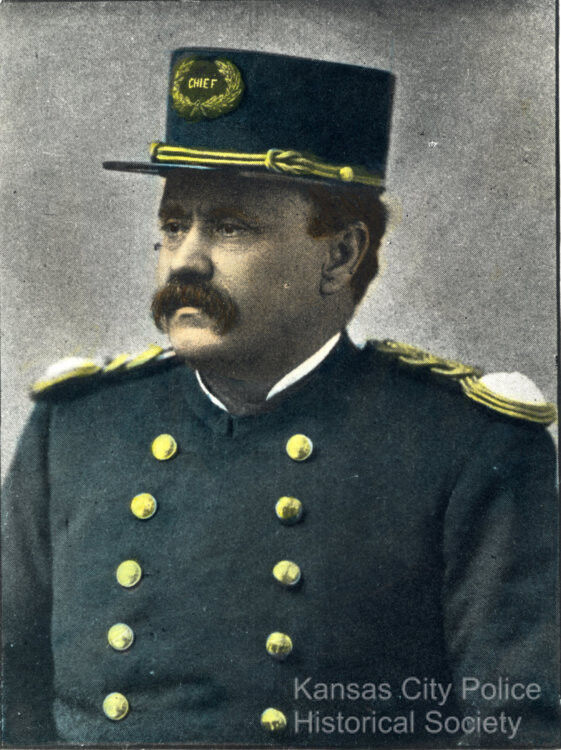Kansas City Police Historical Society
Thomas M. Speers (by Clay A. Speers)
During tranquil times or times of upheaval, we count on our police force to protect the citizenry in a fair, compassionate, proactive manner that not only engages the community it serves but draws strength from it. I believe the current Kansas City Police Department embodies this ideal, based on a framework initially built by their first Chief of Police, Thomas M. Speers who, after having been already elected Town Marshall for four years, served as Chief from 1874 to 1895, a 21-year term of office not equaled since in the state of Missouri.
Living during the period commonly known as the “Wild West,” then Marshal Speers was respected by the likes of Bat Masterson, Wild Bill Hickock, Doc Holiday, and Wyatt Earp, all of whom would sit with him on the bench outside the police station trading stories at one time or another. It was the latter who was quoted as saying in his biography, ” I considered myself a fair hand with a pistol, rifle or shotgun, and I could make a creditable showing in target matches, but I learned more about gun-fighting from Tom Speers’ cronies during the summer of ’71 than I had dreamed”.
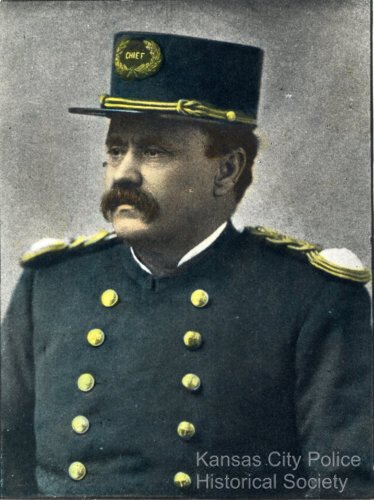
Thomas M. Speers
04/15/1874 - 05/04/1895
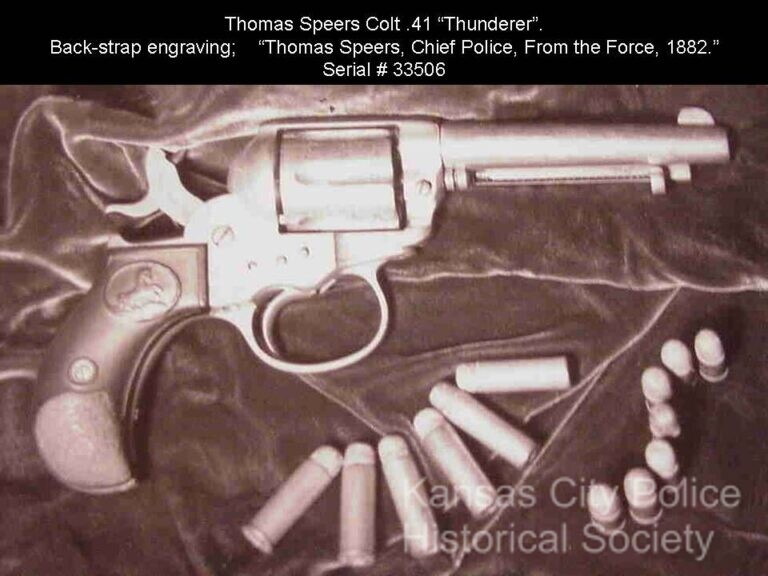
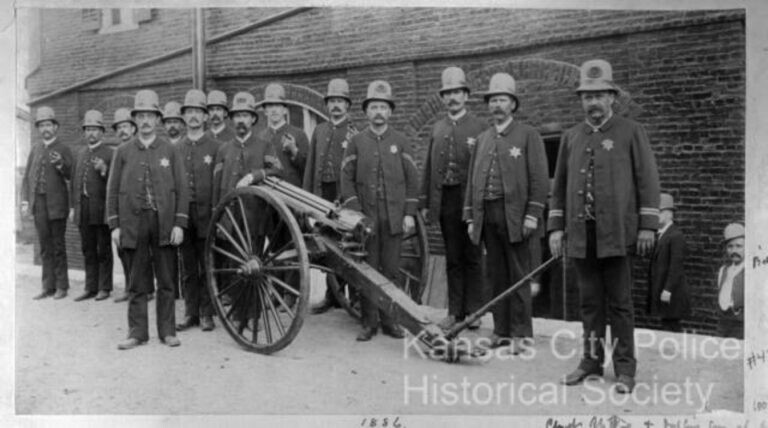
Even Wild Bill could not resist the chance to show off his prowess with a new pair of ivory-handled six-guns in the Market Square at the Marshal’s urging. During the summer of 1871, Hickok was on Tom Speers’ bench showing a pair of ivory-handled six-guns which Senator Wilson had given him in appreciation of his services as guide on a tour of the West. Tom knew, all we all did, Bill’s two favorite exhibitions of marksmanship. One was driving a cork through the neck of a bottle with a bullet. The other was splitting a bullet against the edge of a dime; both at about twenty paces. So, when Tom asked Bill what he could do with the new guns, he added that he did not mean at close range, but at a distance that would be a real test. Diagonally across Market Square, possibly 100 yards away, was a saloon, and on the side wall toward the police station a sign that carried a capital letter, O. The sign ran off at an angle from Hickok’s line of sight; yet before anyone guessed what his target was, Wild Bill had fired five shots from the gun in his right hand, shifted weapons and fired five more shots. Then he told Tom to send someone over to look at the O. All ten of Bill’s slugs were found inside the ring of the letter.”
Long before the advent of modern criminal identification technology, now “Chief” Speers created a “rogues gallery” system of tracking known criminals and preventing them from committing crimes in his town. He knew the face, name, and record of every miscreant listed and they knew him, too, causing them to usually avoid Kansas City at all cost. If their business demanded their presence here, they would inform the Chief, be taken in front of the officers at roll call and told if any crimes of their renown were committed, they would be the first one held accountable.
Chief Speers often scolded, but did not press charges, against younger promising citizens caught running afoul of the law. Fire Chief George Hale later remarked, “he talked like a father to the unfortunate that came to him and, to my personal knowledge, saved many young men from destruction and many families from being broken up.” When families were being threatened by tricksters his advice was to tell them to get out or they’d shoot. If trouble started the Chief was always ready and willing to stand up for a victim in court.
At the height of his popularity in 1895, the Chief was removed from office for exposing a crooked judge’s malfeasance. At the behest of the governor, who was reportedly in the pocket of the elder Jim Pendergast, the then current board of police commissioners refused to comply and resigned, and newly appointed friends of the governor’s gladly carried out the deed. This would ultimately lead to the eventual state control of the department as it is today.
Having been talked of as a potential mayoral candidate in the upcoming election, Tom Speers’ untimely death in the early spring of 1896 was a great blow to the city. It was reported in his Kansas City Star obituary that “nobody in Kansas City was better known and nobody was better respected or more generally liked than ex-Chief Speers.” An outpouring of sympathy flowed into the Speers’ family home from most city officials, political factions, organizations, friends, neighbors, and associates. A second edition of the Star had to be printed to update the sad news and responses. All flags in town were flown at half-mast and thousands attended the funeral which, as he had led his life, contained no pomp or ostentatious display whatsoever.
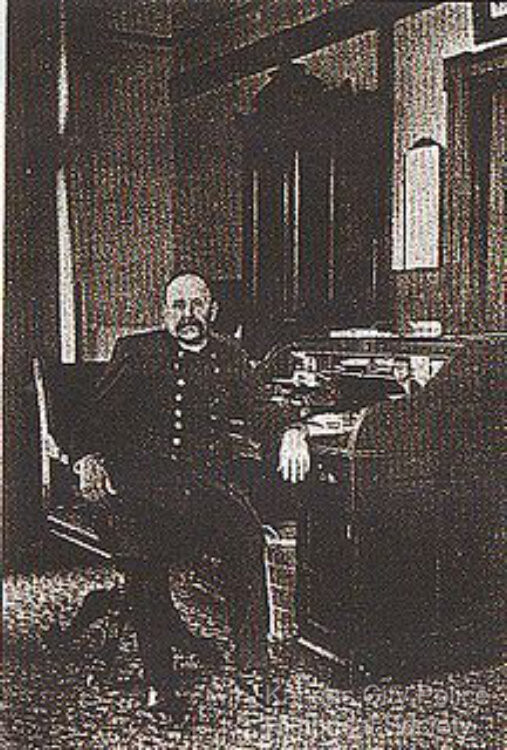
Thomas M. Speers
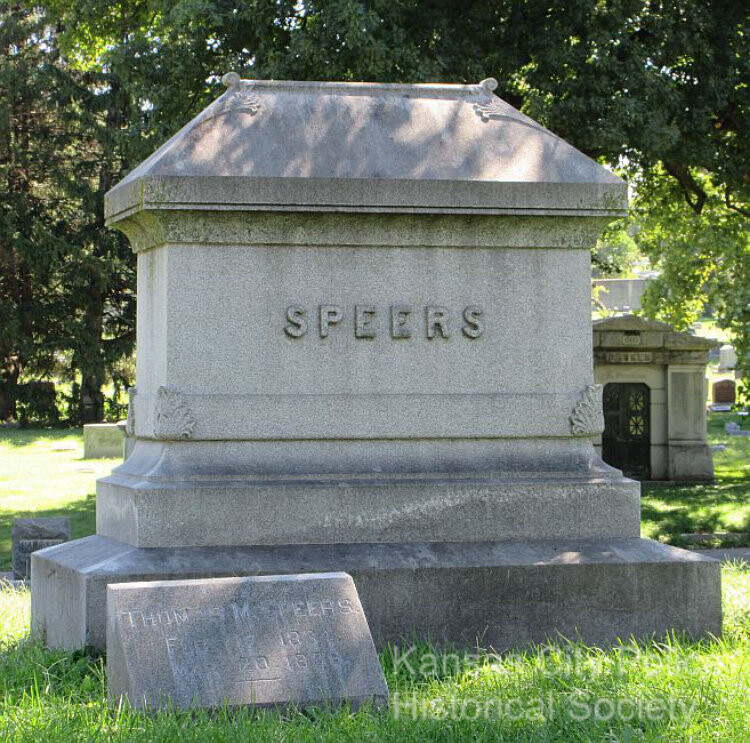
Thomas M. Speers

